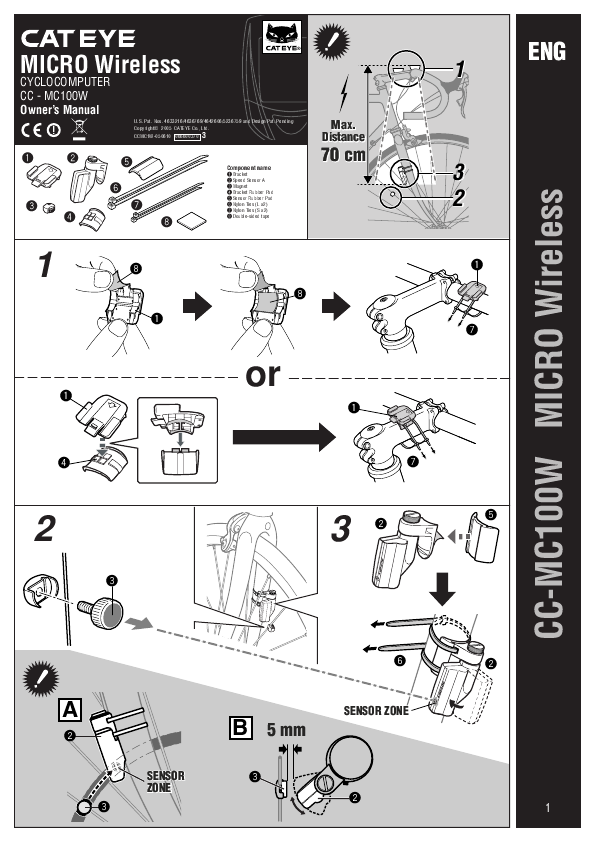
We don’t have any other brands of wireless bike computers to test so we don’t know if this a Cateye-only problem.So - I got a new wireless computer for my bike today - a CatEye MICRO Wireless Cycle Computer (CC-MC100W) - and the instructions are, quite frankly, crap. The signals being generated and leaked by the LED lights were not a “clean” signals and had a lot of harmonics and this must be causing the interference problems with the Cateye computers.Īfter searching for this problem online there are a lot of other posts on cycling forums relating to the Cateye wireless computers and LED lights.
#Cateye micro wireless generator
In order to test if it was a spot frequency or wideband noise causing the Cateye computers to fail we used our frequency generator with signals from 1 kHz to 100 kHz into an antenna near the bike computer but this didn’t stop the senders signal from reaching the bike computer. The screenshot below shows the RF being generated by the SolarStorm headlights. This signal was only present when the LED light was on its medium or high setting but not on its lowest power mode. We then tried our more powerful SolarStorm LED headlights which have two CREE-led units and found that the power cable was radiating a signal with a large primary pulse and a smaller secondary pulse at 49.3 kHz.

We then wrapped a length of wire around the Moon Nova 80 LED headlight to capture the RF being emitted by the light and when connected to our spectrum analyser there was a general increase in RF noise between 0Hz and 10Mhz.Ĭonnecting this to the scope showed several different spot frequencies being generated with a strong pulsing signal at 7.8kHz as shown in the screen shot below.

The scope screenshot below shows the pulse showing the frequency and waveform. The scope screenshot below shows the pulse from the scope. When passing the magnet past the sender unit a pulse was being generated at 19.16 kHz with a time period of approx.

In order to try to resolve this problem and find which frequencies are being used, we wrapped a wire around the sender on the bike computer to act as an antenna and connected this to our scope. As this wasn’t possible on the handlebars we removed the computers and ordered a different brand of wired computer which runs without any problems regardless of the LED lights fitted on the handlebars. When we returned home we experimented with different locations of the LED lights and also the bike computer, the computer would work with the LED lights running but only if the light and the computer were separated by over one meter.

Turning off the LED lights restored the signal so there was a problem with the LED lights transmitting on a frequency close to or a harmonic of the wireless signal coming from the Cateye wheel sender unit which blocked the bike computer from receiving the senders signal. The new computers seemed to be working without any problems until we came to switch on our LED Moon NOVA 80 lights and then the signal from the bike computers sender unit stopped reaching the Cateye computer and the display showed that no signal was being received. We purchased Cateye Micro Wireless bike computers (model CC-MC200W) to use on the bikes as they are nice and compact computers and have enough functionality for our needs to keep track of speed and the distance of the rides.
#Cateye micro wireless full
We recently purchased a pair of Specialized Crux E5 cyclocross bikes from Primera Sports in Bournemouth which we plan to use for longer road rides and some off-road and keep our full suspension mountain bikes for just off-road rides.


 0 kommentar(er)
0 kommentar(er)
